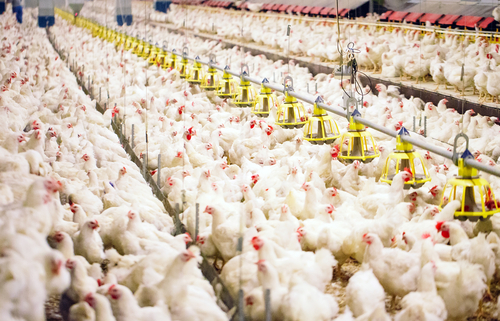
What Is Factory Farming? Is It Good Or Bad?
What we eat, and the ways we farm our food, are complicated. With more humans on Earth than ever before, factory farming has risen as a way to feed people everywhere. So what is factory farming? Is it good or bad?
Let’s start with a concrete definition. Factory farming is defined as a system of rearing livestock using intensive methods, by which poultry, pigs, or cattle are confined indoors under strictly controlled conditions.
There is plenty to say about the complexities of food and farming. There is incredible pressure on farmers as they do their work. The planet has a growing population that needs to be fed. Asking whether a global industry is “good” or “bad” is never a completely straight forward question. However, if you value the health of the planet, the civil rights of human beings, and you are against cruelty towards animals, there are really no ifs, ands, or buts about it — factory farming is bad.

Agriculture and Society
By studying ancient cultures, scientists understand that around 12,000 years ago, hunter-gatherers started to transition to agriculture in order to provide for themselves and their families. With family units becoming more stationary, more complex societies began to form. What started with cultivating wild plants like peas and lentils would eventually lead to skyscrapers and iPhones.
The earliest farmers we know of resided in the fertile crescent — modern-day Iraq, Jordan, Syria, Palestine, Israel, Turkey, and Iran. This was not just one single group of people, though. Isolated groups of genetically diverse communities remained insular for the first few thousand years. Instead of a melting pot, these settlements remained separate while trading tools, ideas, and communications with one another.
Over the course of tens of thousands of years, humanity went from domesticating goats to consuming over 550 million Big Mac burgers every year (in the United States alone). But at what cost?
Cruelty Towards Animals
According to ASCPA, 94% of Americans agree that animals deserve to live abuse and cruelty-free. It is well documented that factory farms contain animals to cages, crates, and crowded pens. A term that pops up again and again while investigating these practices is “CAFOs.” This stands for concentrated animal feeding operations.
A CAFO can house thousands or millions of animals. These facilities are seemingly efficient means for packing animals together in the smallest space possible. This is done in order to garner the highest profit. Not surprisingly, these operations have extremely negative impacts on animal welfare.
For example, while the U.S. slaughters over 9 billion chickens every year and another 30 million are used for egg production, chickens are excluded from all federal animal protection laws. Female chickens are debeaked. After mutilation, they are confined to small cages. They are stuffed together so tightly that their movements are extremely constricted. They are unable to live the active and social lives that chickens exhibit naturally. When animals are stressed by over-crowded conditions, disease spreads easily.
The more you learn about the conditions of chickens, pigs, cows, and aquatic life in factory farming conditions, the worse it gets. It is difficult to comprehend the level of cruelty humans can exert towards other species. And if you’ve ever driven across the middle states of the U.S, you probably smelled these farms well before you saw them.
Dead Zones and Other Environmental Factors
Cruelty towards animals expands when you look at factory farms’ impact on the globe. The environmental effects of factory farms are nothing short of catastrophic. Major concerns include the spread of infectious diseases, water pollution, and air pollution.
Phillip Lymbery, the author of Farmageddon, explains that the focus needs to be “moving the issue out of being a technical niche to get people to understand industrial farming as a big, global problem.” Lymbery stresses the fact that while factory farming might seem more efficient and cost-effective at first, the invisible costs of these operations far outweigh the benefits.
One of the previously invisible costs that we are suddenly learning a lot more about are “dead zones.” A dead zone is an area in the sea where farm pollutants create algal blooms that “kill off or disperse all marine life.” One of the largest dead zones is in the Gulf of Mexico. Toxins from the global meatpacking industry are largely to blame.

Opinion vs. Science
Factory farming has been talked about as necessary for producing food on a global scale. It lowers costs for farmers. It reduces the prices of meat and dairy for consumers. These statements reveal a narrow economic viewpoint. This perspective assumes that we live on a planet of unlimited resources. If we do not invest in a livable planet, none of that matters.
Scientists and activists have been ringing the alarm bell for years on the dangers of this way of looking at industry and society. With growing awareness of climate change and sustainability practices, people are finally starting to listen. Consumers are not powerless.
Here is some food for thought: one third of Earth’s land is used for meat and dairy production. However, a recent study shows that if Americans switch their diets from beef to beans, the United States would achieve 46 to 75 percent of the reductions needed to meet their 2020 greenhouse gas emission goals. This is an exciting prospect. It is possible for us to make different choices, better choices for the health of our planet.

With these factors in mind, do you think factory farming is good or bad? What are your experiences with meat production and consumption?












